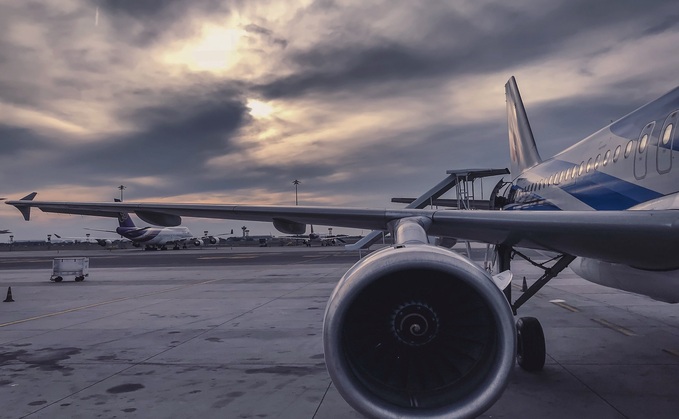
Commercial airlines in the U.S. have returned to profitability in 2022, with EBITDA for the Big Four carriers (American, United, Delta and Southwest) approaching 2019 levels in the second and third quarters. Dallas, Texas-based Southwest became the first major U.S. carrier to reinstate its dividend following the pandemic, the domestic industry having been barred from paying dividends and buying back stock while it was receiving billions in federal aid.
Profitability for the global airlines industry, however, has been out of reach due largely to China's ongoing zero-Covid policy. As the world's largest commercial aviation market, China exercises great influence in the surrounding region and, indeed, on the world stage. In the third quarter, companies in the Bloomberg Asia Pacific Airlines Index recorded a profit margin of negative 16.85 percent.
That may be set to change next year if forecasts by the International Air Transport Association (IATA) turn out to be right. In a December 6 statement, the Geneva-based group said it expects global airlines to post a collective net profit of $4.7 billion in 2023 on revenues of $779 billion. That would mark the first year of profitability since 2019, when the industry pocketed $26.4 billion.[1]
2023's profits are expected to come despite stubborn inflation and a worsening economic outlook, the IATA says. In recent days, most banks and ratings agencies have slashed their global growth estimates for 2023 on expectations of persistently high consumer prices and rapid monetary tightening.
To prepare for this, airlines have been in cost-cutting mode, removing less popular, unprofitable routes to smaller regional airports.
Awaiting the Return of Business Travel
I might add that business travel, which has traditionally represented a majority of airlines' profits, has not yet returned to pre-pandemic levels. An October survey of corporate travel managers in the U.S. found that domestic business travel volume has returned to 63% of 2019 levels, while international business travel is still only at 50%.[2] Based on current trends, it may take until 2024 or 2025 before corporate spending on travel has fully recovered to pre-pandemic levels.
But the acceptance of Zoom and other teleconferencing tools, coupled with the growing prevalence of remote and hybrid work, has allowed workers to travel by air and never miss a day in the "office."
This kind of flexibility has been beneficial not only to workers but airlines and airports as well. It allows demand to be spread out over the calendar year and prevents the formation of peaks and valleys, when airlines and airports have had to deal with too many passengers, or too little.
As American Airlines CEO Robert Isom put it in November, carriers are "not all beholden to the structure of the past," thanks to remote and hybrid work.[3]
An Increasing Reliance on Ancillary Fees
Besides cutting costs and restraining capacity growth, airlines have managed to weather the storm chiefly by generating revenues through ancillary means. Since the era of widespread bankruptcies and consolidation in the 2000s, carriers have increasingly relied on these non-ticket fees for everything from priority seating to branded credit cards.
This year, total global ancillary revenues are forecast to come close to the record high set in 2019. According to consultancy firms IdeaWorks and CarTrawler, which monitor these fees, airlines are on track to collect $102.8 billion worldwide, up from $65.8 billion in 2021 and a stone's throw from 2019's $109.5 billion.[4]
Even though ancillary revenues are expected to fall short of the all-time high in dollar terms, they will continue to represent a greater share of airlines' total revenues, IdeaWorks writes. In 2022, ancillary fees are forecast to represent 15 percent of the industry's total sales, up from 14.4 percent in 2021, 13.6 percent 2020 and 12.2 percent in 2019.
How to Get Access
The best way to get access to the global commercial airlines industry, I believe, is with HANetf's US. Global Jets UCITS ETF (JETS). The ETF invests in not just airlines but also in publicly-traded airports, airport services companies, aircraft manufacturers and online travel agencies.
We like to call JETS a smart-beta 2.0 ETF. This means it tracks an index like most ETFs, but it also shares some characteristics investors might expect to see in an active fund. For instance, JETS is not strictly weighted by market cap weighted, unlike most other ETFs. Instead, it uses a number of quantitative factors to screen for and weight its constituents. It also rebalances and reconstitutes every quarter.
For more, explore and discover the U.S. Global Jets UCITS ETF (JETS).
When you invest in ETFs, your capital is at risk.
This post is funded by HANetf
[1] Airlines Cut Losses in 2022, Return to Profit in 2023. (2022, December 6). https://www.iata.org/en/pressroom/2022-releases/2022-12-06-01
[2] Business Travel Continues Bouncing Back with a Strong Outlook for 2023, According to New Industry Poll from GBTA. (2022, October 7). Global Business Travel Association - GBTA. https://www.gbta.org/business-travel-continues-bouncing-back-with-a-strong-outlook-for-2023-according-to-new-industry-poll-from-gbta
[3] Parsons, M. (2022, November 17). American Airlines CEO on Tackling the New Travel Patterns. Skift. https://skift.com/2022/11/16/american-airlines-ceo-on-tackling-the-new-travel-patterns
[4] IdeaWorks & CarTrawler. (2022, November 15). Airline Ancillary Revenue Nears Pre-Pandemic Level with a 56% Increase to $102.8 Billion for 2022. IdeaWorks Company. https://ideaworkscompany.com/wp-content/uploads/2022/11/Press-Release-169-Global-Estimate-2022.pdf













